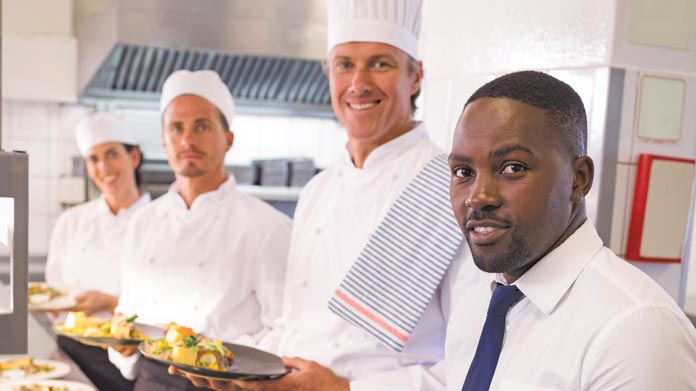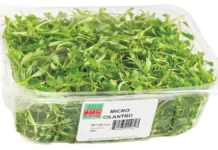
Article contributed by Greg Staley, CEO, SynergySuite
The last year has been a tumultuous one for the restaurant industry. Dining restrictions, labor shortages, supply chain disruption and more stemming from the COVID-19 pandemic have operators scrambling to survive during a time that saw more than 100,000 restaurants close in 2020.
However, as the industry will continue to face changing problems, many restaurants have begun looking at what they can do to remain competitive and maintain their margins moving forward. Budgets that were closed in the initial pandemic uncertainty are opening back up again and restaurants, particularly multi-unit restaurants, are finding places to invest in the future while helping with the rollercoaster of the present.
One of those areas of improvement is the revival of the trend toward building a tech stack that can automate many tasks currently being done manually. Operators looking for savings in prime costs are turning to more advanced tools to help with inventory, scheduling, reporting and more to both cut the amount of time needed to complete those tasks but also use forecasting to make more intelligent decisions about food and labor.
What are some of the reasons restaurants are moving away from manual processes to automating with technology?
1. Increased Employee Retention
Restaurant employees are used to handling their lives from their phones. From banking to dating to doctor’s appointments, there is an app for everything. So, when they have to come in to work to look at their schedule on a printout, or worry their manager forgot to put in the shift swap they texted about, those frustrations can add up.
Giving your employees the same easy experience that you give customers helps show them you are invested in them and want to make their lives easier. Moving manual schedule creation to a labor management tool gives back time to managers that they can spend on more impactful tasks or get more of their day back.
While these may seem like small touches, streamlining and improving scheduling or other tools employees use contributes to a culture of appreciation. Of course, the added bonus is that improvements in retention and reduction in lost labor hours will help you maintain profitability in an unpredictable market.
2. Reduction in Food and Labor Costs
The two biggest costs in the business are also big sticking points for many operators. Because inventory and labor management have been done manually for so long, some restaurant brands see little reason to change and look for efficiencies in their traditional processes.
However, restaurants lose thousands of dollars a month to poor inventory control, and you’ll never know that if your inventory is lagging, or employees do half-hearted inventory because it’s so time consuming. Bringing in automation to your inventory processes allows you to always know theoretical inventory levels and quickly reconcile them with actual inventory.
Similarly, automating scheduling doesn’t just save managers’ time. By using sales forecasts to predict needed staffing levels, you can avoid over or under scheduling, violating labor laws, or scheduling snafus. Automating formerly manual processes gives restaurants more predictability and control over the things that can cost the most.
3. Real-Time Reporting Capabilities
One of the biggest problems with manual processes is that it means all reporting must be done manually too. Managers send information to regional who combines information and sends to corporate. By the time the brand is looking at information, it is several weeks (and sometimes months!) out of date.
In the fast-paced restaurant industry, brands who want to stay competitive cannot afford to not know what’s going on in their business every day. Maintaining a cohesive tech stack to help manage your operations does more than just improve whatever tasks you’re using technology for. It also means you get more accurate, relevant data.
Bringing together your data into a single data warehouse, rather than a patchwork of spreadsheets and software, allows you to get cohesive visibility into what’s working, what’s not, and how you can fix it. True reporting turns guesswork into data-driven decision making.
4. Better Health and Sanitation Tracking
Throughout the pandemic, customer preference polling has been clear – customers want to know what restaurants are doing to keep them safe. Customers want to support restaurants and would love to dine in, and they will do so more for restaurants who clearly communicate what they are doing to keep employees and customers safe.
Providing health questionnaires, regular cleaning, and other health and sanitation procedures can be done manually. However, by bringing them into a checklist tool, you have better records of what is being done, as well as information to provide to any local regulating bodies if needed.
5. Clear, Consistent Communication
Communication in growing brands is always a struggle. When a regional or brand-wide process changes and needs to be rolled out or a food safety alert is activated, it’s all too easy for some employees to miss the message. Email printouts or shift meetings can get missed and don’t get reinforced well, so they’re often forgotten.
However, team apps are on the rise, making it possible for employees and managers to communicate with each other, brands to communicate with some or all of their employees, and for employees to get push notifications about critical alerts. Additionally, having checklists tools or other brand-wide tools means corporate can push out updates without wondering if employees are working off the most recent version.
The pandemic has thrown the entire restaurant industry for a loop, but as many brands recover and work to bounce back, they are increasingly looking to automate cumbersome manual processes. It may seem hard to invest in new technology right now, but the benefits gained will pay dividends long into the future with improved operational performance and visibility.
 About the Author: Greg Staley is the CEO of SynergySuite, a back-of-house restaurant management platform. Greg focuses on facilitating better visibility and increased profitability for restaurant chains through the use of intelligent, integrated back-of-house technology. For more information or to discuss SynergySuite’s solutions, please contact Greg at greg@synergysuite.com.
About the Author: Greg Staley is the CEO of SynergySuite, a back-of-house restaurant management platform. Greg focuses on facilitating better visibility and increased profitability for restaurant chains through the use of intelligent, integrated back-of-house technology. For more information or to discuss SynergySuite’s solutions, please contact Greg at greg@synergysuite.com.























